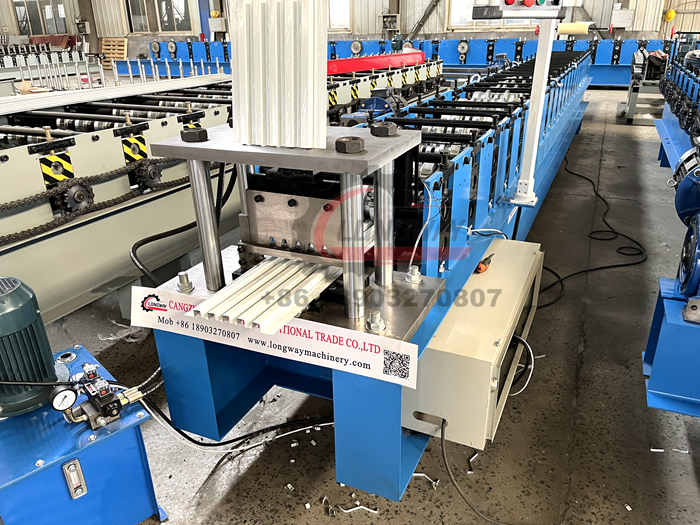Understanding and Monitoring the Operation of Keel Roll Forming Machines
Understanding the Role of Stud and Track Keel Roll Forming Machines
In the rapidly evolving construction and manufacturing industries, efficiency and precision are paramount. One of the key technologies that have revolutionized the production of building materials is the stud and track keel roll forming machine. This innovative equipment plays a crucial role in producing steel framing components, which are essential for constructing modern buildings, residential properties, and industrial structures.
What is a Stud and Track Keel Roll Forming Machine?
A stud and track keel roll forming machine is a specialized piece of machinery designed to create steel studs and tracks used in light gauge steel framing. The process of roll forming involves feeding a coil of metal through a series of rollers that gradually shape the metal into a desired profile. The resulting steel components are lightweight, durable, and easy to install, making them a preferred choice for many construction projects.
Components and Functionality
The primary components of a stud and track keel roll forming machine include the decoiler, roll forming station, cutting mechanism, and control system.
1. Decoiler This device unwinds the metal coil, preparing it for the forming process. It ensures a smooth and continuous feed of material into the machine.
2. Roll Forming Station This is where the actual shaping occurs. The machine uses a series of precision-engineered rollers to gradually bend the metal into the specific profile of studs or tracks. Each set of rollers is designed to produce a unique shape, allowing for a wide variety of designs.
3. Cutting Mechanism Once the metal has been formed into the desired profile, the cutting mechanism trims it to the required length. This can be either a flying cut-off or a stop cut mechanism, depending on the operational requirements.
4. Control System Modern roll forming machines are equipped with advanced control systems that allow operators to program different specifications, monitor performance, and even adjust parameters in real-time for enhanced efficiency and accuracy.
stud and track keel roll forming machine

Advantages of Using Stud and Track Keel Roll Forming Machines
1. Cost-Efficiency By automating the manufacturing process, companies can significantly reduce labor costs and material waste. This results in a more economical production line without sacrificing quality.
2. Speed and Productivity Roll forming machines are capable of producing large quantities of studs and tracks in a short period. This accelerated production time is essential for meeting the tight deadlines often associated with construction projects.
3. Precision and Consistency The automated nature of roll forming ensures that every component produced is uniform in size and shape, which is vital for the structural integrity of building frames.
4. Flexibility These machines can be easily reconfigured to produce different profiles, allowing manufacturers to adapt quickly to changing market demands or customer specifications.
Applications in the Construction Industry
Stud and track keel roll forming machines are integral to various applications within the construction industry. They are predominantly used in the creation of wall framing, ceiling systems, and partitions in commercial buildings, residential homes, and even modular construction units. The use of steel studs and tracks contributes to faster construction times, improved energy efficiency, and enhanced structural performance.
Conclusion
As the construction industry continues to advance, the importance of innovative manufacturing technologies such as stud and track keel roll forming machines cannot be overstated. These machines not only streamline the production of essential building materials but also contribute to the overall efficiency of construction projects. By investing in such machinery, manufacturers can position themselves at the forefront of industry advancements, ensuring they meet the growing demands for speed, sustainability, and quality in building material production.
-
Roof Panel Machines: Buying Guide, Types, and PricingNewsJul.04, 2025
-
Purlin Machines: Types, Features, and Pricing GuideNewsJul.04, 2025
-
Metal Embossing Machines: Types, Applications, and Buying GuideNewsJul.04, 2025
-
Gutter Machines: Features, Types, and Cost BreakdownNewsJul.04, 2025
-
Cut to Length Line: Overview, Equipment, and Buying GuideNewsJul.04, 2025
-
Auto Stacker: Features, Applications, and Cost BreakdownNewsJul.04, 2025
-
Top Drywall Profile Machine Models for SaleNewsJun.05, 2025








